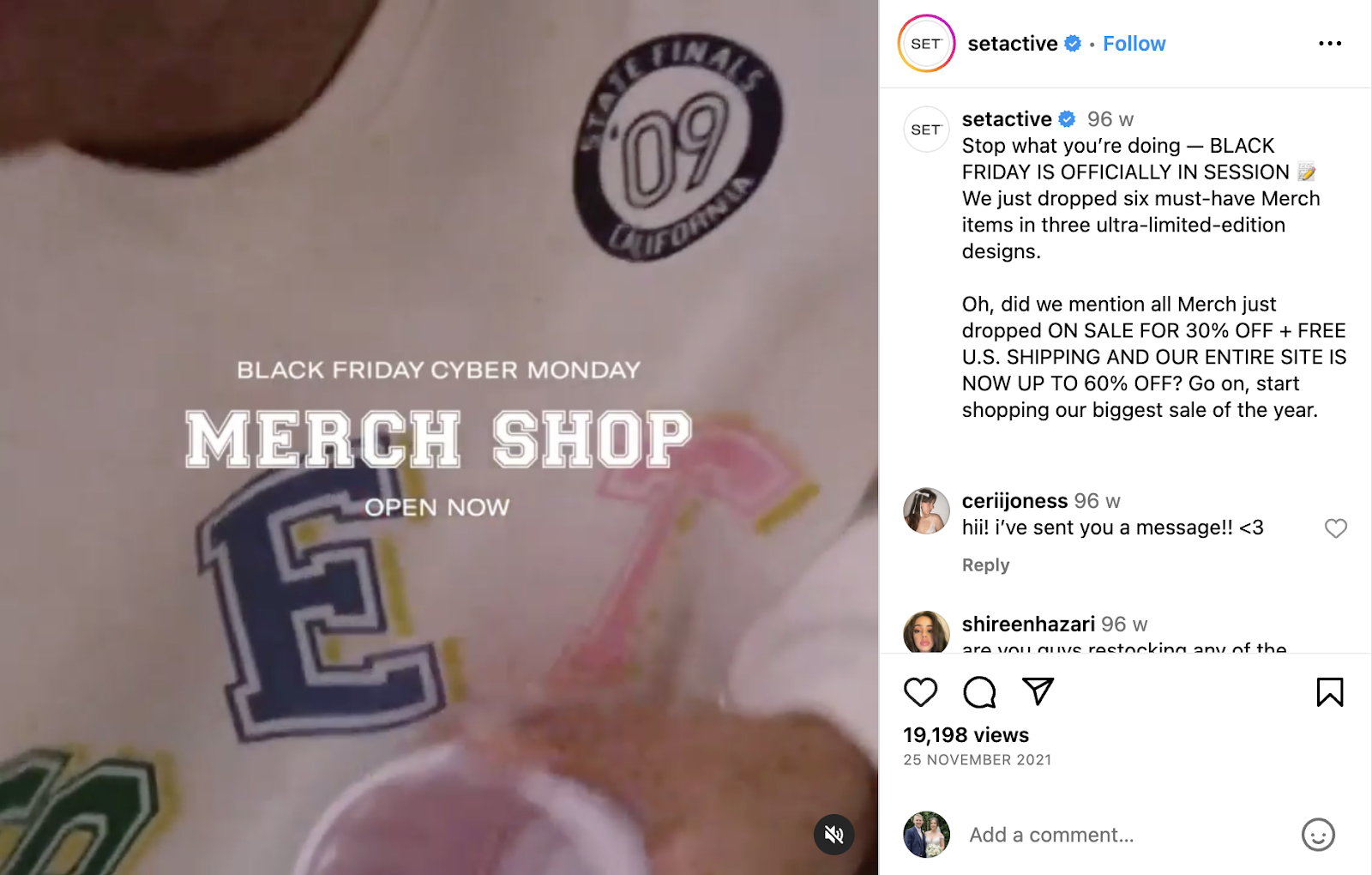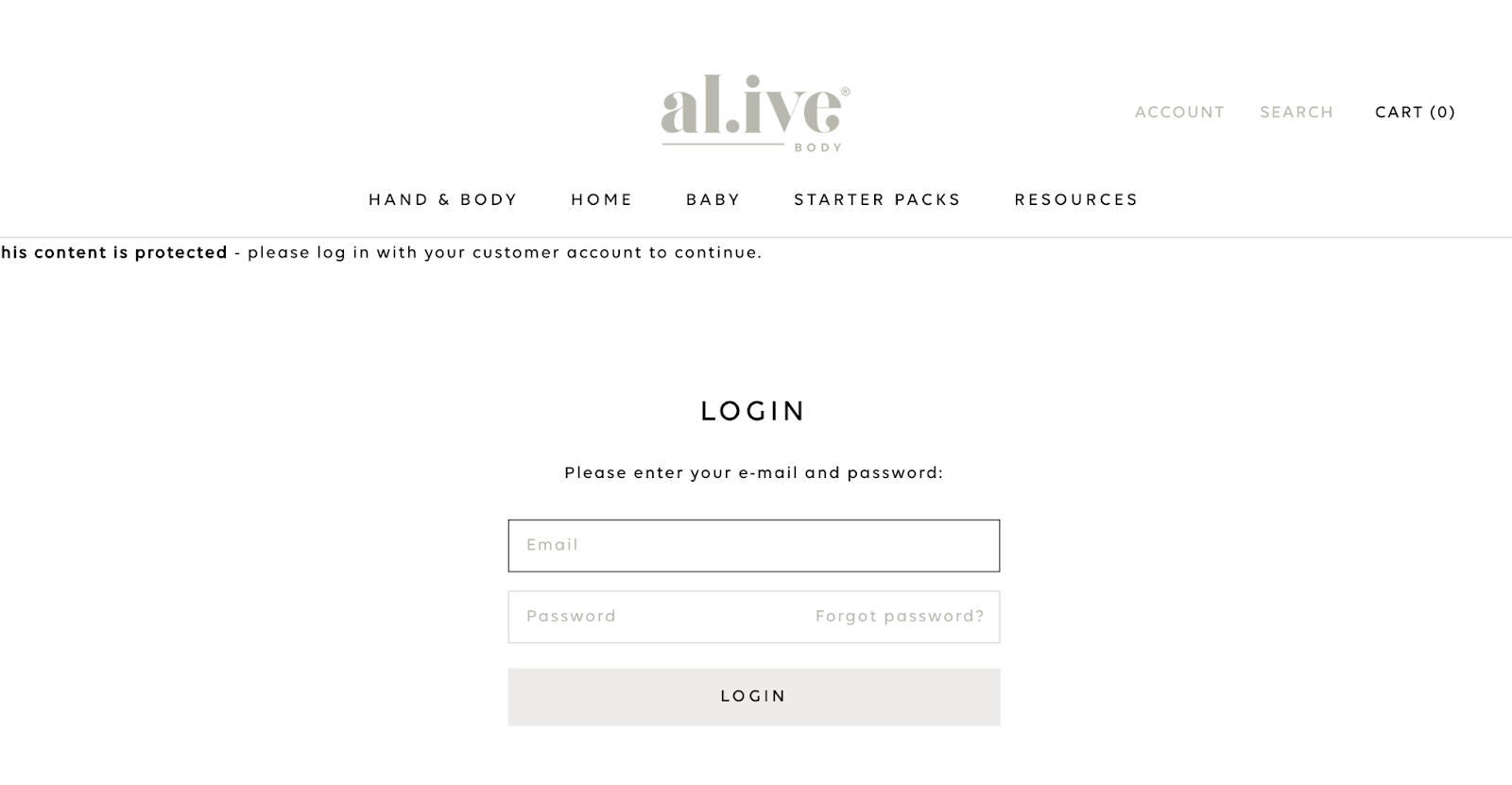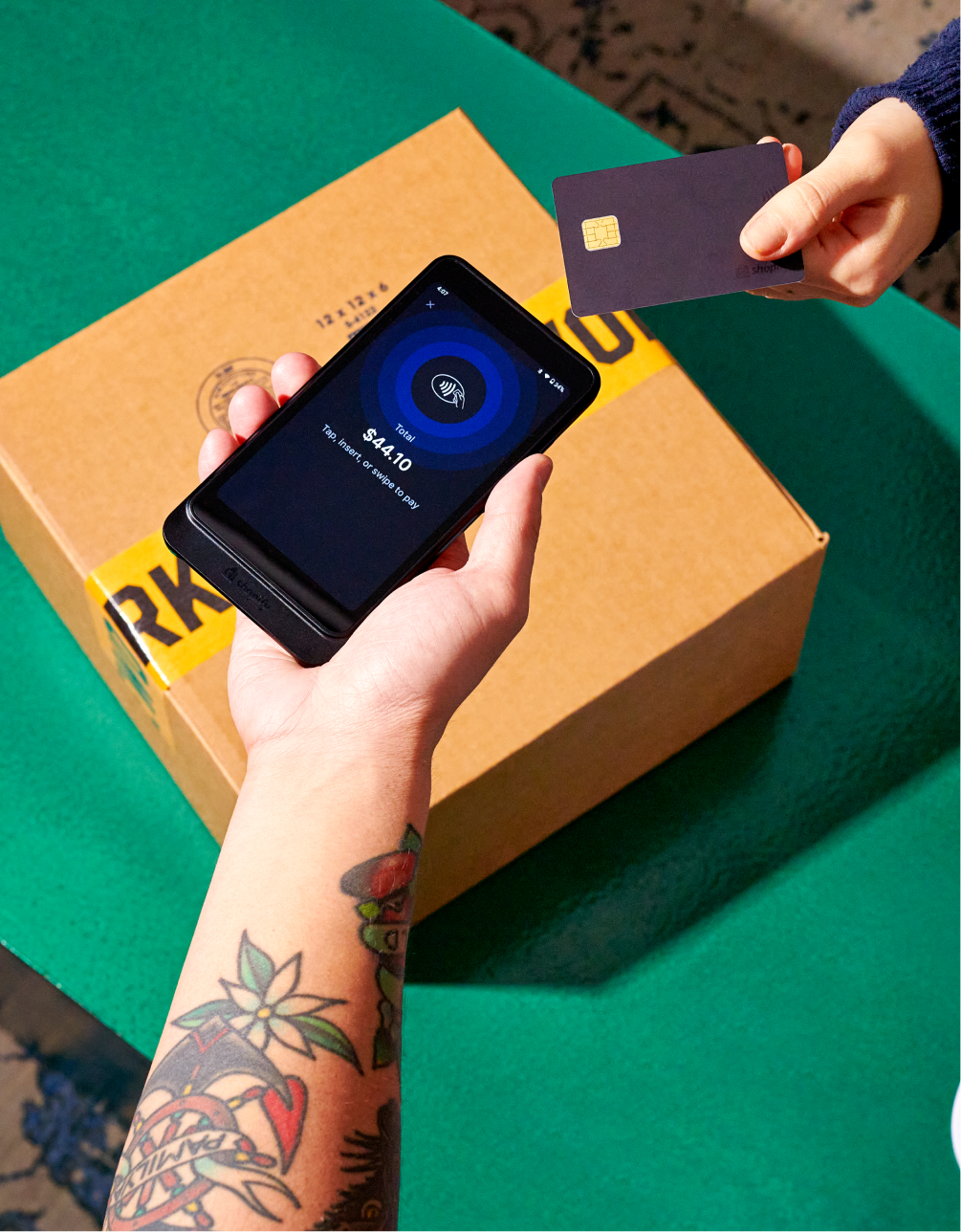Last year’s Black Friday Cyber Monday weekend was the biggest sales season of all time. Global consumers spent a collective $211.7 billion online during the four-day holiday shopping season.
Not to be outdone, Shopify Plus merchants did a bit of record-breaking as well: more than $7.5 billion in gross merchandise value (GMV) during the four-day weekend—a 19% increase from 2021. Merchants attracted 17.5% more shoppers than last holiday season, boasting an average conversion rate of 7.38% and trumping the 1.4% year-round average.
1. Advertise to lookalike audiences: Happy Hippo
Happy Hippo makes child-friendly bath products. Since its launch by Canadian artisans in 2006, the Shopify Plus merchant has become an established manufacturer that white labels its products and sells directly to customers via its Shopify store.
Happy Hippo turned to Shopify Audiences, a feature that helps Shopify Plus merchants find more customers and reduce customer acquisition costs by using data from similar brands.
Its campaigns were a success from the onset: In the company’s first campaign, 23% of Happy Hippo’s total sales came from new-to-brand customers, thanks to Shopify Audiences. The campaign also recorded an impressive 1.4 times return on advertising spend. Its paid marketing team took this data to Facebook and created a lookalike audience to reach similar buyers on the social media channel.
“Shopify Audiences is a huge benefit for Plus merchants,” says Adam Biel, Happy Hippo’s CEO and lead product designer. “It has helped lower customer acquisition costs so our investments can stretch much further with Facebook ads.”
2. Release time-sensitive product drops: Set Active
Set Active is a fitness apparel retailer that diversifies its holiday marketing campaigns each year. In 2021, the brand dropped new products in the six days leading up to Black Friday—all of which had new colors or were completely original items. Each drop was high school themed. “We keep the discounts the same,” Set Active’s founder and CEO Lindsey Carter said in a Glossy interview. “But in terms of what we drop, how we do it and the theme, we change it every year.”

Set Active’s product drop promoted on Instagram. Source: Instagram
The retailer also added gift cards of varying amounts in every order shipped throughout the holiday season. It had a lottery effect: the more orders people made, the higher their chance of receiving a high-value gift card.
These enterprise marketing strategies were in lieu of traditional discounts brands rely on throughout the holiday season. “The more you discount, the less they’ll buy full price,” Lindsey said. “Brands need to get creative about communications on Black Friday to get the consumer to not rely only on discounts.”
3. Lean into experiential retail: Studs
Shoppers still flock to brick-and-mortar stores to find the best deals throughout the holiday season. Last Cyber Week, online retailers that catered to these offline shoppers with options like buy online, pickup in-store (BOPIS) fulfillment options grew online revenue by 38% more than those without it.

Studs’ Nolita store.
Studs sells its jewelry online and operates 19 piercing studios across the country. Throughout the holiday season, it focused heavily on experiences that would attract customers to its studios, including ear piercing events. Its VP of omnichannel marketing, Rachel Sacks-Hoppenfield, said people who participated in these events have a higher lifetime value than people who just buy jewelry there.
To ramp up excitement around Black Friday and Cyber Monday, the jewelry brand advertised mystery earring bundles. People had to buy earrings in Studs’ Nolita piercing studio to redeem the token in a gumball machine. In an interview with Modern Retail, Rachel said the event was “a huge success; it was great for walk-in traffic to actually convert.”
4. Be transparent about upcoming sales: Universal Standard
Discounting is a great strategy to capture holiday sales, especially if the incentive increases as the weekend comes to a close. But considering the Black Friday Cyber Monday weekend spans four shopping days, you leave your brand open to criticism when people who jump at the deal find out they could have saved even more money by holding off.
Apparel brand Universal Standard took this into consideration with its holiday marketing efforts. Co-founder Polina Veksler shared a statement on Instagram that explained its upcoming holiday promotions calendar. The post was flooded with comments from grateful customers—both new and existing—who credited the transparency as helping with budgeting and purchasing decisions.

Polina’s statement on Instagram.
“We’re not trying to hoodwink our customers,” Polina said in an interview published on Glossy. “Our customer is smart, they tend to be women who are a little older, and they’re savvy about these things. You can’t fool them, and we don’t want to.”
Sales data from its holiday campaign wasn’t disclosed, but Glossy reports that the Instagram statement attracted more engagement than any of the brand’s prior posts. The corresponding email campaign, which was sent to its entire subscriber list, also had a click rate 10 times higher than the industry average—no small feat considering the average customer gets 18 emails per day in the run up to BFCM.
5. Gather data with quizzes: Bariatric Fusion
One part of any holiday marketing campaign involves speaking with people who are already aware of your brand. Grow the number of people in this brand-aware pool so that when BFCM rolls around, you’re not desperately tapping into new audiences and struggling to reach people who don’t know who you are and what you sell.
Bariatric Fusion took this into account and ramped up the number of people it could market to via email before the holiday season arrived. It turned to OctaneAI, an advanced quiz maker with supporting Shopify app, to create a quiz that helped people find the most suitable vitamin for them. Quiz takers had to enter their email address in exchange for the recommendation.
The quiz itself was a success: it collected 16 times more emails than standard email pop-ups and boasted a 15.1% purchase conversion rate.

Bariatric Fusion’s quiz. Source: OctaneAI
Aside from delivering personalized product recommendations, Bariatric Fusion divided quiz participants into buyer profiles based on their:
Gender
Type of surgery
Preferred method to take supplements
Flavor preference
Bariatric then had a repository of information to reach people throughout BFCM. It knew exactly what each email subscriber preferred and the type of surgery they’d be taking the vitamins for—valuable first-party data that gave it an upper hand from other online retailers without it.
6. Partner with influencers and creators: HiSmile
HiSmile’s co-founders Nik Mirkovic and Alex Tomic had no prior knowledge of the dentistry industry, but managed to surpass $130 million in total sales—and achieve a $300 million valuation—just a few years after launching the brand.
Back in 2018, HiSmile was one of few brands that took advantage of the creator marketing industry. It had nearly 2,000 brand ambassadors actively promoting its teeth whitening kits on social media. Its most recent holiday marketing campaigns fell along the same lines—this time using TikTok to capture new audiences and convince them to buy.
HiSmile ran advertising campaigns that targeted TikTok users who were higher up in the sales funnel (before adding products to their cart). The ad creatives were produced by TikTok creators, all of whom showcased their personal experiences using HiSmile products.

HiSmile’s creator-produced campaigns. Source: TikTok
HiSmile’s general manager, Justin Gaggino, says, “We’re seeing a lot of people searching for our products, we’re seeing a lot more awareness of our brand in the market and that’s been directly attributable to TikTok.”
HiSmile’s creator-produced content made for incredible holiday ads. Throughout the BFCM weekend, TikTok reported that 39% of HiSmile’s website traffic originated from these social media campaigns and accounted for 93% of all new customers. The holiday campaigns led to a 28% increase in revenue.
7. Personalize email marketing campaigns: Represent
Email marketing is a powerful tool to connect with holiday shoppers over the BFCM weekend. Not only is email responsible for 20% of all website visits throughout the holiday season, but people who buy through BFCM emails spend 138% more than their counterparts.
Represent, a British streetwear brand, used Klaviyo to take a three-pronged approach to its Black Friday email strategy:
Launch a new product to coincide with discounts. These launch emails had a countdown timer to instill a sense of urgency. They got three times the industry average click rate and contributed to £188,000 ($229,000) in revenue alone.
Automated cart recovery emails. Not everyone who visited the Represent ecommerce store purchased—no matter how enticing the discount seemed. The online retailer used data it had already collected on customers to run cart abandonment emails. This campaign had an 8.3% purchase rate during Black Friday.
Loyalty program invitations. When Black Friday came to a close, Represent maximized value from its holiday campaign by inviting subscribers to join its loyalty program.

Represent’s Black Friday promotion countdown. Source: Klaviyo.
“After the Black Friday sale, we educate our customers on the benefits of our loyalty program,” Represent’s ecommerce development manager, Ricky Jennings, said in an interview with Klaviyo. “This keeps them engaged and more likely to return to our brand to shop again, which is the most valuable thing that can come from Black Friday.”
The three-step campaign helped Represent generate £1.2 million ($1.5 million) on Black Friday alone. Just over a third was directly attributed to email marketing.
8. Launch an SMS loyalty campaign: Til You Collapse
Til You Collapse, a fitness apparel brand, turned to Shopify partner Yotpo to create an SMS campaign that encouraged customer loyalty. The goal was to create an exclusive community where loyal customers could talk to the brand more directly—with the added bonus of more revenue from repeat customers.
The brand’s SMS loyalty campaign was a success across the board. Not only did Til You Collapse get direct access to its loyal customers, but its SMS campaigns helped the brand learn more about each online shoppers’ interests and preferences.

Til We Collapse’ SMS loyalty campaign. Source: Yotpo
“If we launch a campaign for a new product, not only are we seeing almost immediate revenue via SMS, but our customers also respond directly, thanking us for the update,” Andrew Ridley, the brand’s head of marketing, says. “It’s these types of messages that we want to receive—it shows us that we’re really engaging with them on the channel they prefer.”
Yotpo reports that Til You Collapse has an average engagement rate of 70% across its entire SMS strategy, achieves 16 times ROI on new product launches, and sees a 15% conversion rate on winback campaigns. On its Black Friday and Cyber Monday campaigns, this skyrocketed to 21%.
9. Expand into B2B ecommerce: al.ive body
It’s not just DTC that thrives on the buzz of Black Friday and Cyber Monday. Business-to-business (B2B) ecommerce sales also rise throughout the weekend, when retailers look for special deals that allow them to purchase products in bulk, at a lower cost than usual.
al.live body, a premium personal care brand, took this approach with its holiday ecommerce strategy. It already had two storefronts—one for DTC, another for B2B—and soon found relying on third-party applications and integrations too overwhelming, not to mention overly complex and cost intensive.

al.ive body’s B2B portal, powered by Shopify.
The brand revamped its DTC and B2B operations by upgrading to Shopify Plus. This meant combining the two storefronts in one back end with a separate password-protected portal for suppliers to register, view bulk deals, and check out. al.ive body also used Shopify Scripts to customize the B2B checkout process—a move that increased conversion rates by 47%.
“There’s absolutely no reason why we can’t be an international brand now that we have Shopify Plus,” says al.ive body’s CEO and co-founder, Alisa Fraser. “Its powerful customization features have empowered us to prove our business model and it gives us the confidence to take the next leap in our business journey.”
As a result, ali.ve body achieved its best sales period to date. The brand brought in over AU$1 million ($643,000) throughout the four-day BFCM weekend.
10. Automate holiday promotions: Blenders Eyewear
Running an ecommerce business over the holiday season can feel like you’re spinning multiple plates. Blenders Eyewear is an online glasses retailer that uses automation to its advantage. Founder Chase Fisher was ready to claim some of his competitors’ 80% market share during the Black Friday weekend of 2017, but he needed a strategy in place:
Targeted email and social media ads. Budget for these campaigns increased as the holiday shopping weekend came closer. By BFCM weekend, it was pouring over $343,000 into Facebook and Instagram ads.
An impressive deal. To claim market share, Fisher knew he needed a standout offer. So he ran a promotion that gave 55% off all sunglasses and 40% off snow goggles.
Shopify Launchpad was Chase’s secret weapon to keep things running smoothly, without relying on manual processes to manage updating content, show available promotions, and manage discounts. The entire site design changed automatically once a new promotion became available.

The sale page that automatically appears when the promotion starts.
“When things go live at midnight, you don’t want to have to stay up till midnight to do all these changes,” Chase says. “We had our offers switched to go out through Launchpad. We had our themes switched to go out through Launchpad. They pushed everything through successfully.”
Blenders Eyewear had a record-breaking Black Friday Cyber Monday weekend, boosting the previous year’s online sales by a factor of 10. Its momentum continued for months to follow. During the first quarter of the following year, Blenders Eyewear grew sales by another 900% year on year.
Get ready to dominate this ecommerce holiday season
These Shopify Plus merchants prove that holiday campaigns don’t have to be standard. Ditch the out-of-the-box templates and get creative with the holiday deals and promotions you’re running.
Shopify Plus’s ultimate objective isn’t simply to drive more sales than our competitors or dramatically outgrow the industry. The goal is to become the heart of a merchant’s business—to help them simplify the costly patchwork of tools and processes that cause many to feel overwhelmed.
Breaking $7.5 billion in 2022 though? That’s just the start of even bigger records Shopify Plus merchants will smash this holiday season.
Holiday ecommerce FAQ
How can I increase sales during the holidays?
Advertise to lookalike audiences.
Use quizzes to gather data.
Run influencer marketing campaigns.
Tease upcoming promotions.
Launch an SMS loyalty campaign.
Personalize email marketing campaigns.
Automate holiday promotions.
How do you market during the holidays?
Create a gift guide or quiz.
Give SMS loyalty points.
Send targeted emails.
Offer free gifts or gift cards.
Lean on influencer content.
Advertise to your target audience.
Showcase customer reviews.
How do I prepare my online store for the holiday season?
Forecast demand.
Record accurate inventory levels.
Plan your holiday promotion calendar .
Automate upcoming discounts or deals.
Schedule holiday marketing campaigns.
Secure extra income with Shopify Capital.
Read more
- The Plague of Ecommerce Return Rates and How to Maintain Profitability
- 21 Ecommerce Personalization Examples & 7 Scalable Tactics
- What is 3PL: How to Select a Third-Party Logistics Partner
- What Is a Warehouse Management System? Definition and Software Review
- How to Choose An Enterprise Ecommerce Platform
- What is Headless Commerce: A Complete Guide for 2022
- What are the retail trends for 2023?
- Wholesale Ecommerce: What is It and How to Start?
- Omnichannel vs Multichannel: What is the Difference and Why Does It Matter?





